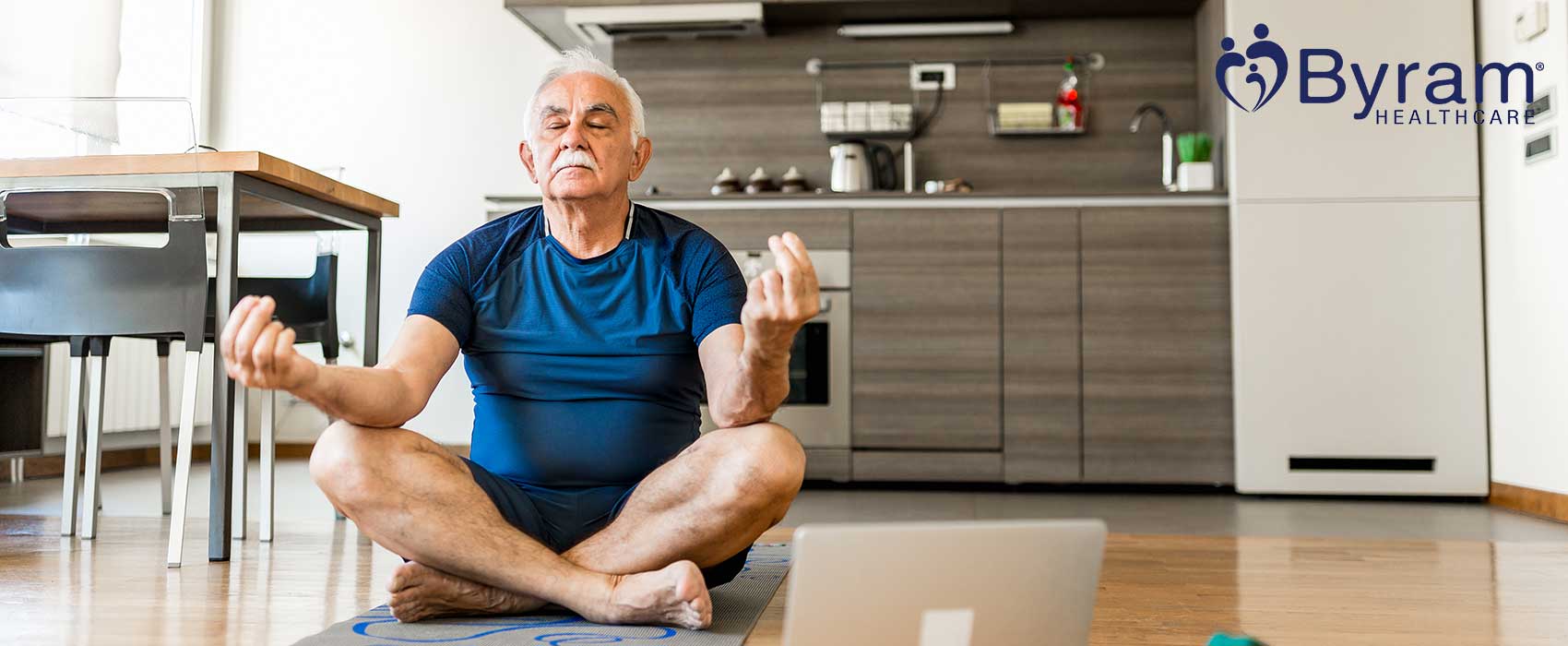
Bladder training is a type of lifestyle modification treatment that’s aimed at learning how to better manage urinary incontinence. The underlying goal of this treatment is to help you change disruptive urination habits so that you can gain more bladder control. Bladder training is most commonly used as a treatment for stress or urge incontinence, but can also be used by individuals who have mixed incontinence, which is a combination of the two. The idea behind bladder training is that it can help increase the amount of time you can go between using the bathroom while strengthening your ability to control the urge to urinate. Since it involves no medical or surgical intervention, bladder training is often the first method of treatment for individuals with incontinence. But does it really work? Here, we’ll explore whether or not a bladder training program is actually helpful and how to use it.
The Basics of Bladder Training
Bladder training involves using a fixed voiding schedule, regardless of if you actually feel like you need to urinate or not. The idea is that, like strength training, the more that you exercise the bladder, the more control you’ll have. This helps elongate the periods of time between emptying your bladder, which can lead to substantial improvements in quality of life. During the intervals, if you feel the need to urinate, the idea is to practice suppression techniques discussed with your doctor. These are usually either relaxation techniques or pelvic floor exercises. Over time, the intervals can get increasingly longer until you reach about three or four hours.
Does It Really Work?
According to several doctors and medical professionals, bladder training is an effective treatment option to improve urinary incontinence. However, it takes time, patience, and a lot of work. You need to commit to the long-term schedule and make it a part of your daily life. Otherwise, it’s unlikely that you’ll see many noticeable changes.
With that being said, what works for some people doesn’t always work for others. There are several different treatment options for urinary incontinence, so if you find that bladder training isn’t making a substantial impact on your quality of life, talk to your doctor. Other lifestyle modifications can include limiting bladder irritants, double voiding, and engaging in regular pelvic floor exercises. If these don’t work, your doctor may recommend medication, medical devices, interventional therapies, or even surgery. The important thing to remember is that you have options, so don’t be afraid to discuss challenges of bladder training with your doctor.
How to Perform Bladder Training
Bladder training is a lifestyle modification treatment, so any complications or risks are relatively low. Still, individuals who have urinary incontinence should always discuss treatment options with their doctor before trying anything at home.
1. Create a Bladder Diary
One of the most important parts of bladder training is creating a bladder diary and meticulously filling it out. This will give you a more accurate understanding of your voiding habits and provide your doctor with the information you need to begin. Without a bladder diary, you may start with intervals that are too far apart, which will set you up for failure in the long run.
When filling out your bladder diary, try to be as detailed as possible. This should include the amount of liquid you consumed throughout the day, when you feel the urge to use the bathroom, and the length of time between the onset of the urge and voiding. If you experience any other symptoms, include them in your bladder diary as well. The idea is that you can never be too detailed when documenting your bathroom habits, as the more your doctor knows, the better the chances for success.
2. Evaluate Your Normal Schedule
During the beginning of bladder training, it’s important to simply evaluate your normal schedule and keep track of it in your bladder diary. This will act as a basis for your treatment, so don’t try to start training just yet. Instead, spend a few days to a week writing down liquid intake in addition to every time you have an urge to use the bathroom and when you void. Try to think about how many hours you normally go between bathroom visits each day. This will help you and your doctor set your goals.
3. Choose a New Interval Goal
Once you and your doctor assess your current schedule, you’ll work together to choose a starting interval goal. This will be dependent on what you’re comfortable with, which is why it’s important to keep track of your normal schedule before beginning the training. You’ll begin the timing each day when you wake up. As soon as you get out of bed, the first thing you should do is empty your bladder. This acts as the beginning of the training schedule for the day. Whatever time you use the bathroom in the morning, the next time you should void is after you’ve waited the appropriate amount of time according to the schedule set by your healthcare provider. The goal is to only go to the bathroom at the designated interval time throughout the day. While this may seem intimidating, you won’t be increasing the interval a substantial amount all at once, as doing so could lead to further complications.
4. Hold Your Bladder
If you find that you need to use the bathroom before your interval time has approached, practice suppression techniques. Try to remind yourself that your bladder isn’t full and create a relaxing mental image. You may need to focus all of your energy on this during the beginning of bladder training, but the effort will pay off in the end. Another effective bladder suppression tool is performing kegel exercises or other pelvic floor exercises. By contracting the pelvic floor muscles, you can strengthen your control over your bladder and reduce the feeling of contractions or involuntary voiding. If you’re not sure whether or not you’re targeting the correct muscles during pelvic floor exercises, talk to your doctor about trying biofeedback. Biofeedback allows you to see which muscles you’re contracting, so you can make the necessary adjustments. However, it’s currently only available for women.
Once you get close to the interval period, you can begin to slowly walk to the bathroom. Try to maintain a calm composure and avoid running as this may increase the feeling of urgency. The goal is to hold your bladder up until the very last minute.
You may find that as one of your voiding times approaches, you don’t feel the need to urinate. It’s important that you continue to go to the toilet and try to empty your bladder during this time as it can help create a pattern of behavior that your body comes to anticipate.
5. Increase the Interval
Once you can easily and successfully hold your bladder for the duration of the set interval, try to gradually increase it ever so slightly. Never raise it more than 15 minutes at a time, as doing this can set you up for failure. However, spreading out the time between urination with training will help you retrain the muscles in your bladder. This can drastically improve your quality of life and make you feel more confident in public settings. Continue with bladder training over the course of several weeks or even months to further improve your time. Eventually, you may find that you’re able to wait much longer than you ever anticipated. Bladder training can also help to reduce the feeling of urgency and even periods of urge incontinence.
Bladder training can be a helpful treatment for stress incontinence and urge incontinence, but if you don’t see success then it’s important to talk to your doctor or urologist. There are several things you can do to be proactive about your urologic care and help minimize disruptive symptoms of urinary incontinence. Working with your doctor is the best way to approach personalized treatment and improve your overall quality of life.
If you suspect you may have urge incontinence or any other type of urologic condition, it’s important to see your doctor to receive an accurate diagnosis. Only then should you begin a treatment plan like bladder training. To help enhance your overall health, Byram Healthcare offers a wide selection of high-quality urological supplies that can be discreetly delivered to your door. Browse our urology product catalog today or call one of our representatives for more information on our catheter delivery program.
Byram Healthcare is a member of the National Association for Continence’s Trusted Partners Program, whose mission is to provide quality continence care through education, collaboration and advocacy. We continue to build partnerships in the clinical community to ensure we focus on what’s best for the patient.




